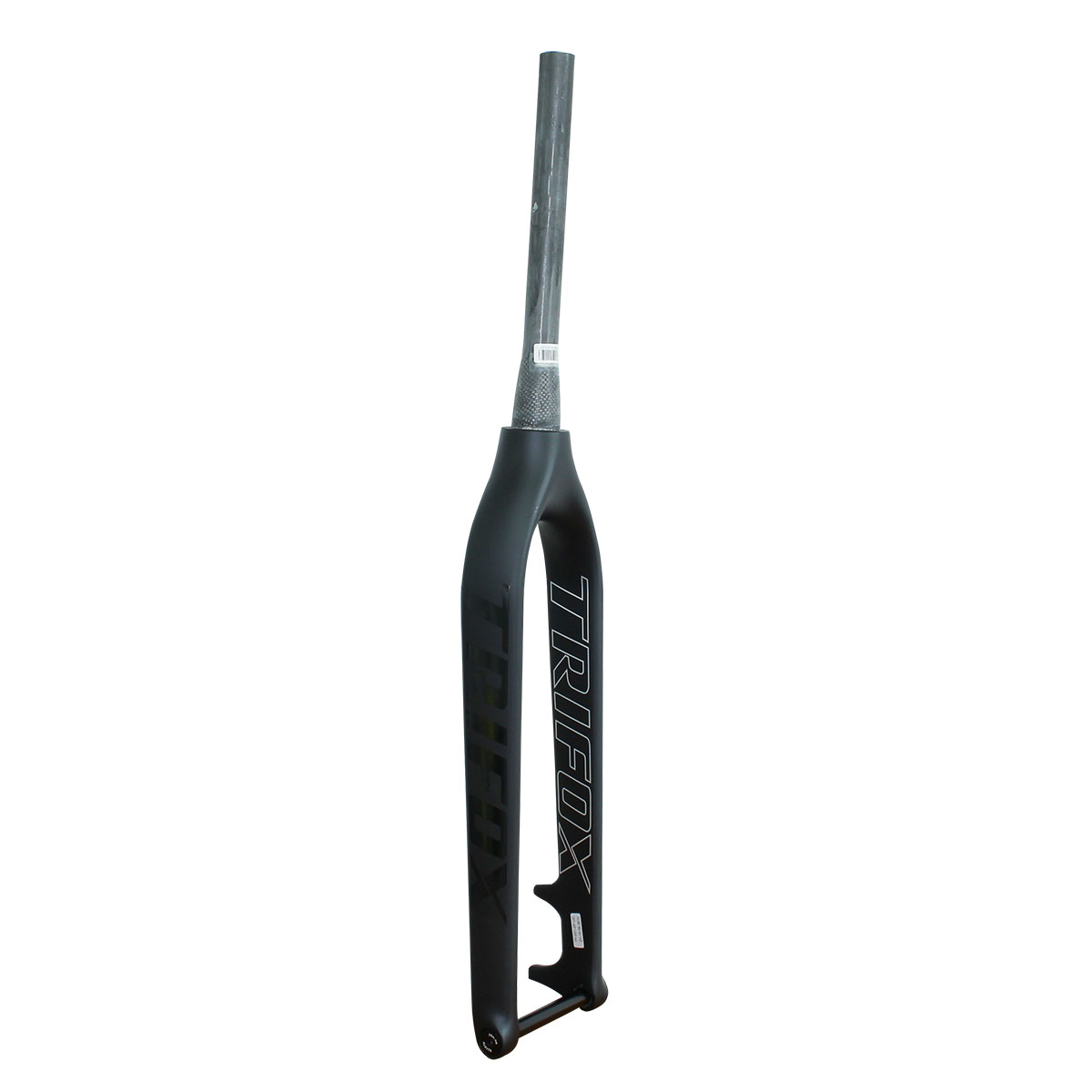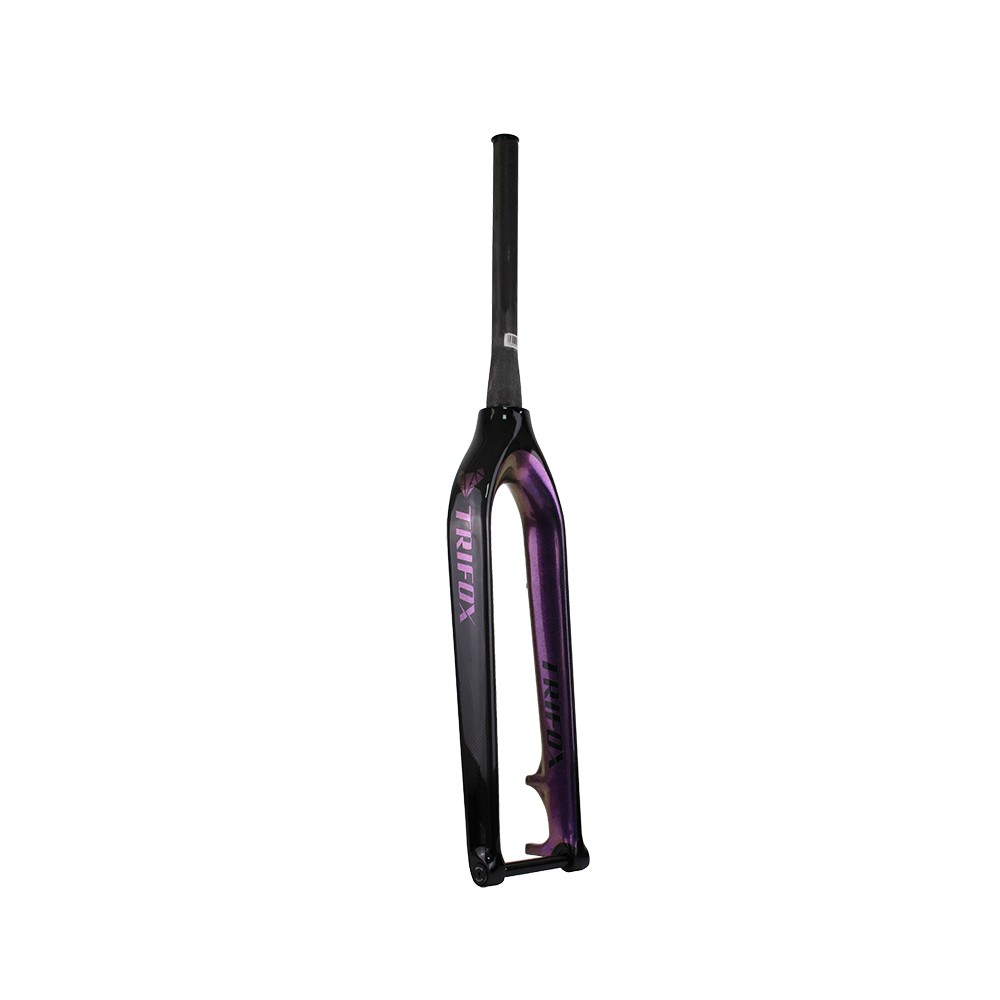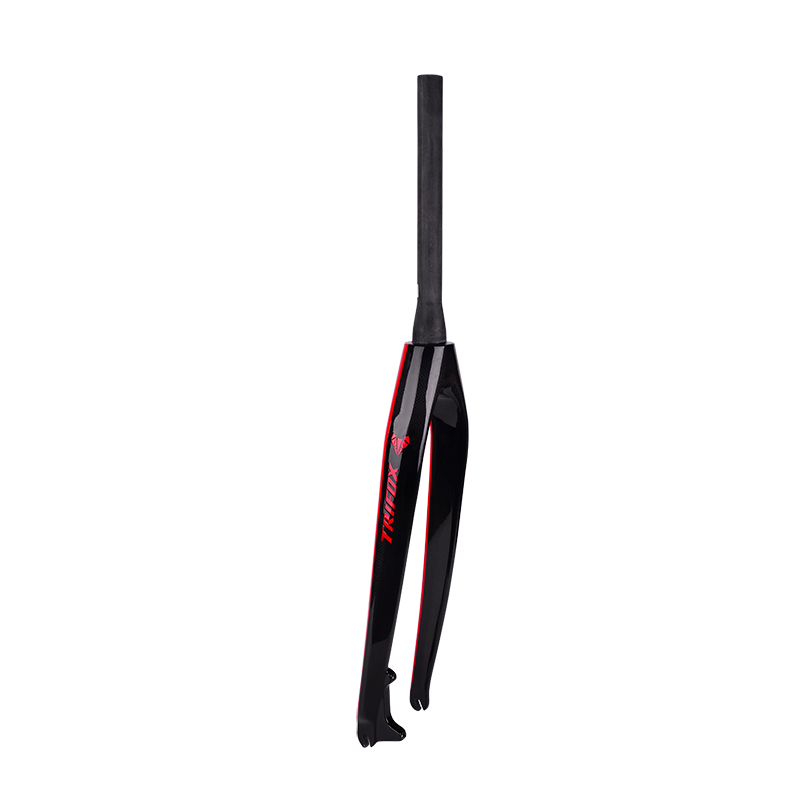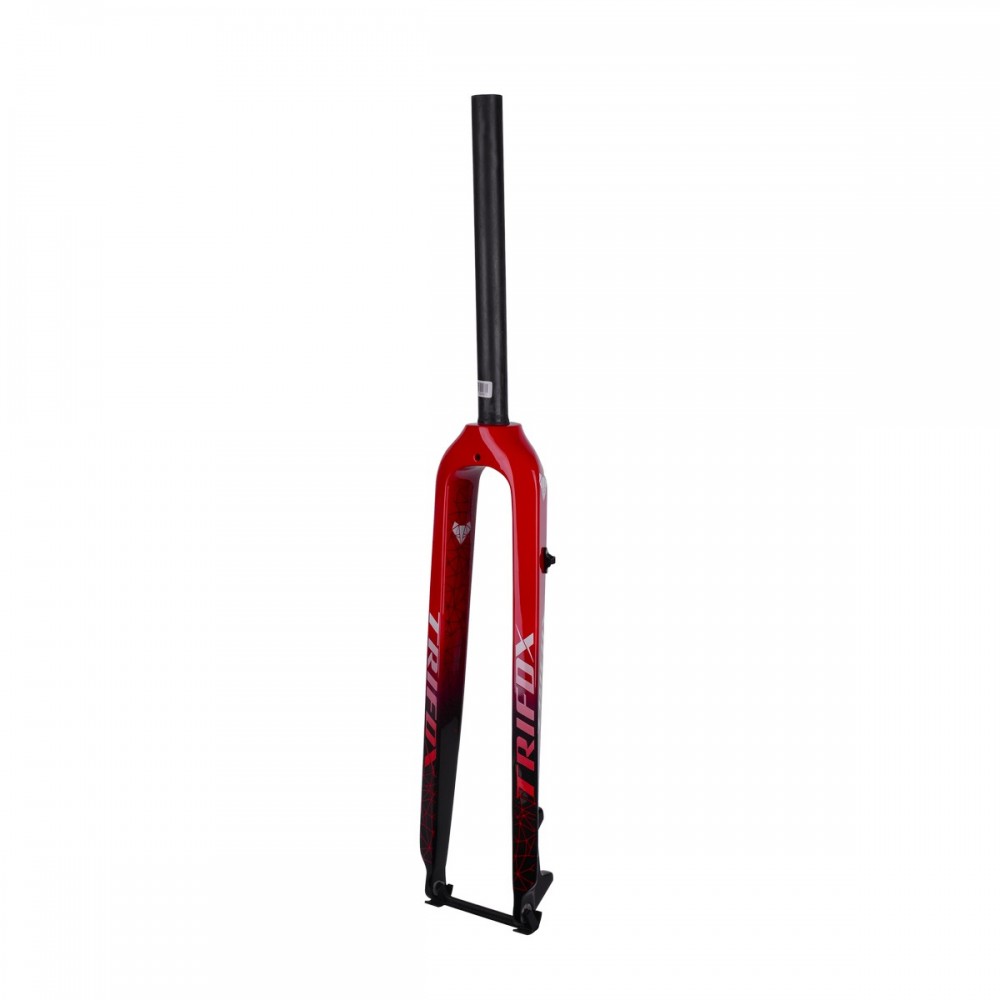When touching a new mountain bike, squeeze the mtb fork a few times.
It’s like starting a car engine.
Like the engine of a car, the mtb rigid fork is usually the focal point of the bike.
This is an important factor in bike performance and attitude.
Most experienced riders can look at the rigid fork on any bike and infer its performance.
Squeeze Test of Carbon Mtb Fork
MTB wouldn’t be as much fun without the extra traction, comfort, and control that the carbon fiber fork provides.
If you want to learn more, it’s worth looking at the different tapered fork out there and what they’re designed for.
This blog covers the most popular boost fork in every riding category, and you can find these non-tapered forks at TRIFOX.
This blog will make it easy for you to evaluate the intended use and functionality of the bike fork.
If you’re looking to upgrade your current cycle fork or assemble a bike, this is the perfect place to start.
The most modern bicycle fork uses air springs because they are lighter and easier to adjust.
The carbon rigid fork focuses on enduro and downhill like the Carbon MTB Fork TMK200 and Carbon MTB Fork TMK100 offer coil spring options.


Entry-level mtb fork often uses less expensive dampers that offer less adjustment to control compression and rebound damping.
The High-end rigid bike fork use more advanced dampers that are more responsive in rough terrain and offer more tuning options.
The damper is the biggest factor in the price difference between an entry-level and a high-end mountain bike rigid fork.
In many cases, the carbon bike fork of the same brand will use the same shock options in different models but use different chassis to customize performance.
For example, the Carbon MTB Fork QMK100 and Carbon MTB Fork QMK200 contain TRIFOX’s high-end Grip2 dampers.


Different models have the same damper performance, but weight and stiffness will vary depending on the strut diameter.
About 29er fork
The 29er carbon fork is designed to minimize weight and maximize efficiency.
To achieve this, the 29 rigid fork provides minimal travel and uses smaller diameter struts.
29er fork is typically 250-500 grams lighter than their counterparts.
The 29 fork also features a remote lever that allows you to quickly lock the carbon fork for climbing and smooth sections without taking your hands off the lever.
Some XC riders are already pushing the limits of their light XC bikes on steeper, rougher terrain.
So-called “off-road” bikes fill the gap between pure off-road racing and off-road bikes.
To accommodate these bikes, we introduced a lightweight version of the 29er rigid fork to improve performance on tough downhills.
Rigid mtb fork 29 sits between a lightweight trail fork and a heavy-duty enduro fork, balancing weight, stiffness, and travel to suit the widest range of riders and terrains.
These rigid forks can be found on short to medium-travel trail bikes that perform equally well on climbs and downhill.
Additional Reading
As far as downhill performance goes, the new generation carbon fork pushes enduro bikes to the extreme.
They’re still built with a single crown, but thanks to the massive struts, stiffness isn’t an issue.
Naturally, this makes these models heavier than the 29er carbon fork.
The most famous fork manufacturer is TRIFOX.
If you want to learn more about tapered forks, check out “How a Top Brand Makes Mtb Forks Work infinity?“
It covers technology, features, popularity, competition results, and the hierarchy in its carbon mtb fork.
Bike fork has different offsets, which can affect the handling of your bike.
If you want to know more about boost fork products, please click TRIFOX.






